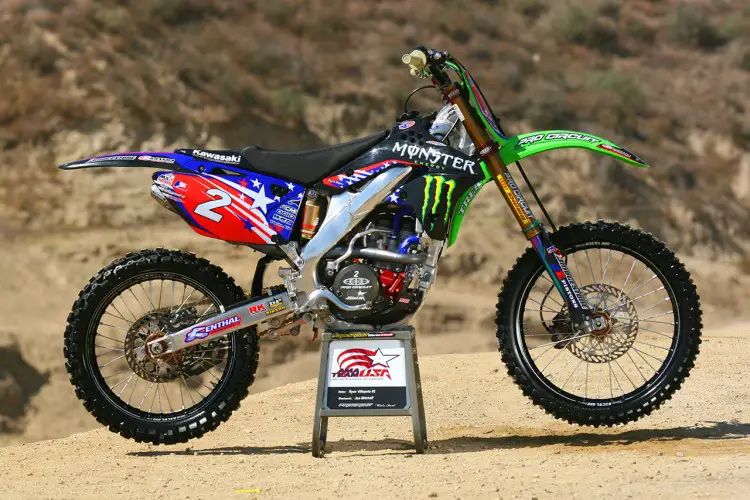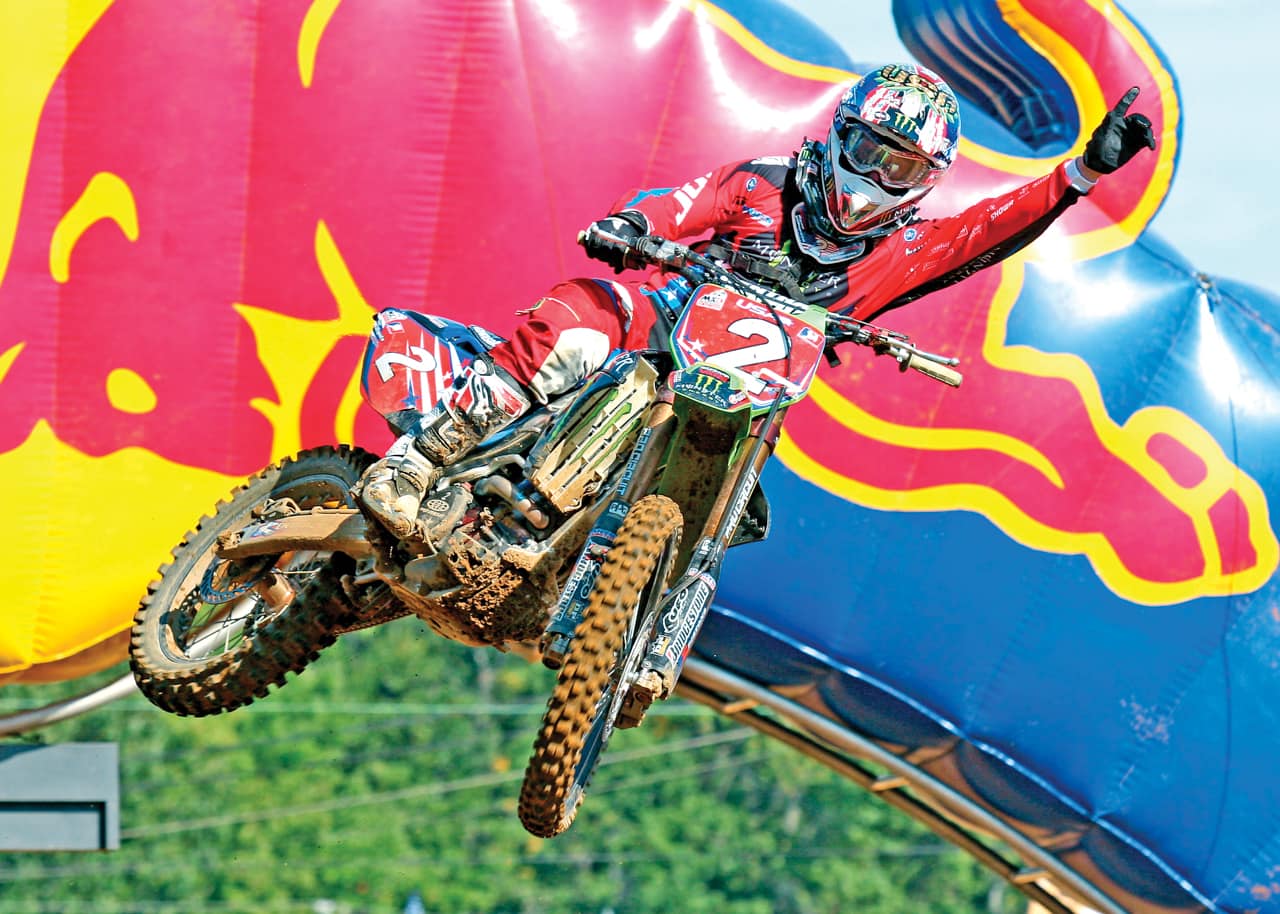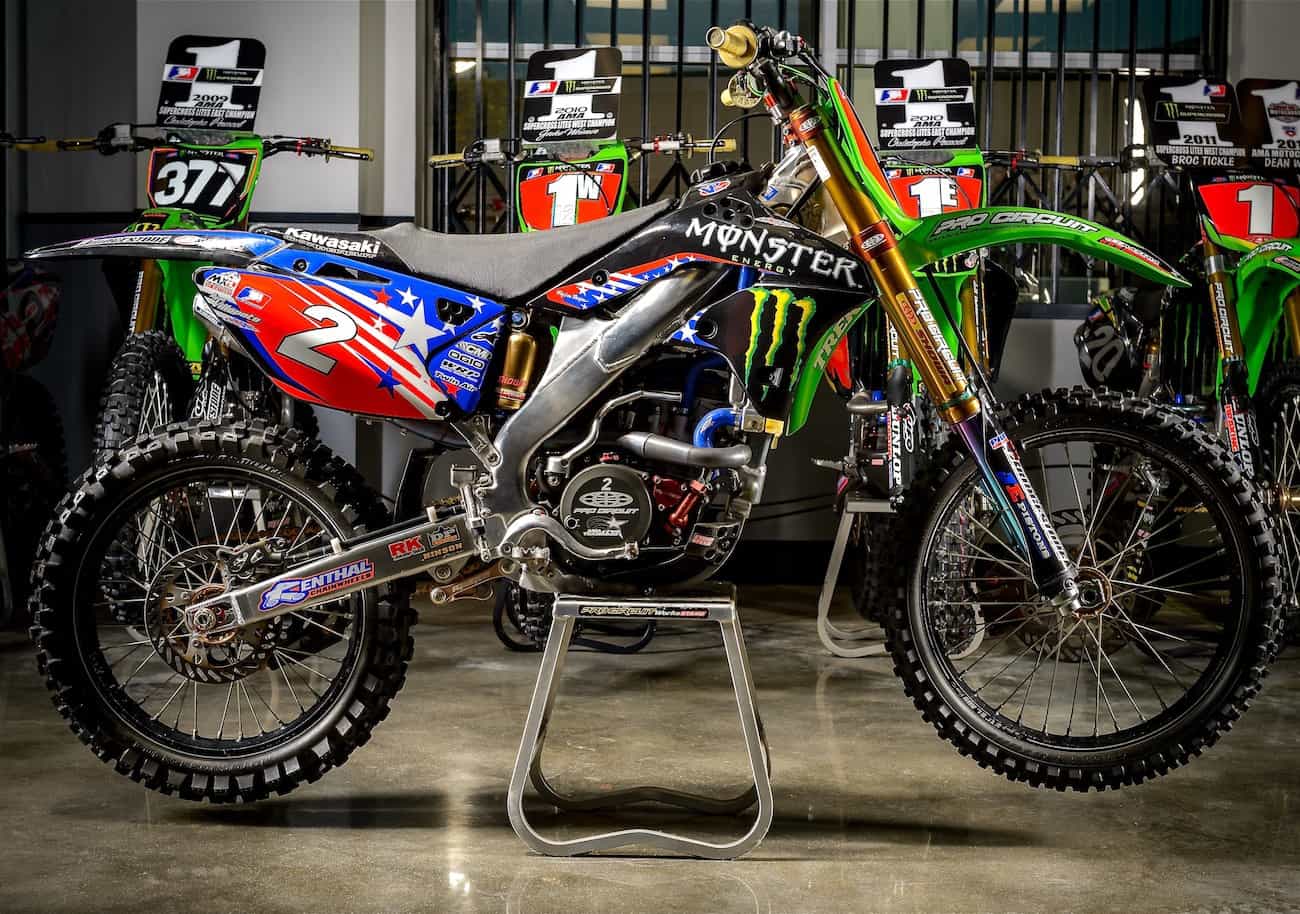FLASHBACK FRIDAY | RYAN VILLOPOTO’S 2007 KX250F | GREATEST BIKE EVER

By John Basher
What’s the greatest bike you ever rode? Answers vary. Perhaps you’re a 450 four-stroke lover, or maybe you’re one of those two-stroke advocates that bleed Castor 927. Heck, some guys get through the work week by daydreaming about romping around the track on their beloved Maico. Whatever the case may be, motocross riders love the ones who love them back. Of course, no relationship is perfect. Amicable companionship takes hard work. It’s not much different than, say, a happy marriage. Fortunately our bike won’t yell if you leave the toilet seat up.
I have friends who married their first love, and others who will likely never settle down. The same goes with motocross bikes. Variety is the spice of life. However, heed the advice of an experienced dabbler. When you happen upon perfection you shouldn’t let it go. For this reason you likely wish you still owned your very first bike. Old iron is a time capsule for the soul, a nostalgic way of preserving the past and celebrating one’s age of innocence. Sadly, the garage of life isn’t big enough for treasured possessions and your wife’s SUV. Nine times out of ten, old junk recedes in the wake of responsibility. That’s why some of my buddies will never tie the knot. Their garage is a sanctuary; a sliver of motocross nirvana. When loneliness sets in they hide away in their man space and stare at their moto menagerie. Only the masters of this universe balance selfish desire with their wife’s needs. I’m not quite there. A stack of tearoffs lean against my wife’s sewing kit; baby toys are bookended by MXA helmets. Marriage, like motocross, is a give-and-take.
WHEN YOU HAPPEN UPON PERFECTION YOU SHOULDN’T LET IT GO. FOR THIS REASON YOU LIKELY WISH YOU STILL OWNED YOUR VERY FIRST BIKE. OLD IRON IS A TIME CAPSULE FOR THE SOUL, A NOSTALGIC WAY OF PRESERVING THE PAST AND CELEBRATING ONE’S AGE OF INNOCENCE.
Like you, I have loved and I have lost. I’ve played the field, ridden a bunch of machines, and moved on. That’s what an MXA test rider does. From pit bikes to 500cc two-strokes, I’ve been there and done that. I’m not gloating, rather explaining the breadth of my experience. Some bikes were completely tragic – the 2005 Kawasaki KX250 two-stroke and any Italian-made Husqvarna FC250 still haunt my dreams–while others were the absolute model of excellence. Do you own a 2008 Honda CRF450, 2016 Yamaha YZ250F or any YZ125 after 2005? Heed my advice: hold on to it forever. Get rid of the old pile of MXA magazines to clear space for any one of those bikes in your garage. You’ll thank me later.
I’ve tested bikes that were great on paper, but duds on the track. Conversely, I fell in love with bikes that were too big, too slow, or too quirky for any sane person to enjoy. The heart wants what it wants. My tastes changed with the snail-like developmental progression of the Kawasaki KX450F. I liked that robust, ill-handling porker since it had a four-speed transmission. In subsequent years the KX450F gradually improved. An explosive powerband couldn’t mask the bike’s faults, but I learned to love its peccadilloes.
 MXA‘s Daryl Ecklund putting laps on Ryan’s KX250F back in 2007 at Glen Helen.
MXA‘s Daryl Ecklund putting laps on Ryan’s KX250F back in 2007 at Glen Helen.
Factory bikes are considered the epitome of motocross machinery. They blend power, handling, outrageously expensive parts and the latest technology into one package. If you believe that factory bikes are a dream to ride, then you are sadly misguided. People want what they can’t have. Just like a supermodel, a factory bike is attractive on the outside, but personality makes a difference. The truth is, you couldn’t get James Stewart’s forks to budge or Ricky Carmichael’s bike to turn. Two of the sport’s brightest pupils had their preferences, and somehow those settings worked for them. Trust me, they won’t work for you. While it’s nice to dream about throwing a leg over factory bike, find solace in the fact that your bike is better for your needs.
At one time I kept a running tally of all the factory bikes I tested, but I round filed the list years ago. No one cared what I rode, anyway. It’s much more enjoyable talking about good bikes or, better yet, horrible clunkers. Nothing brings riders together like mutual disdain. I made a lot of friends in casual conversations about the 2009 Honda CRF450. That bike was a wheelbarrow. While it’s hard to discuss factory equipment with fellow throttle twisters – testing a race bike isn’t like buying soda out of a vending machine – it’s nice to reflect on past machinery.
 Ryan Villopoto racing the same bike we tested at the MXDN where he brought team USA to victory.
Ryan Villopoto racing the same bike we tested at the MXDN where he brought team USA to victory.
Every once in a blue moon a great white elephant comes along – a factory bike that works splendidly for mere mortals. I can count those experiences on one hand. Ryan Villopoto’s 2007 Pro Circuit Kawasaki (above) was one of my favorites. The technical experts at Pro Circuit developed a sterling package – blazing fast engine, solid handling, unbelievable brakes, and suspension that absorbed heavy impact while breezing through small chop. Next came Justin Barcia’s 2012 Geico Honda CRF250. Although not as good as Villopoto’s steed, it encouraged me to twist the throttle without suffering any consequences.
Factory 450 four-strokes are another story. Up until recent years race teams put a ton of emphasis on horsepower numbers. As a result, there was no way anyone outside the top ten in the 450 class could handle the raw power of a factory bike. Even now, 450 race bikes are too high-strung for me. For that reason, I wear a St. Christopher necklace and say a few Hail Mary’s before putting knobby to dirt whenever I get the chance to ride a works 450 four-stroke.
 The bike is still sitting at the Pro Circuit headquarters on display.
The bike is still sitting at the Pro Circuit headquarters on display.
I don’t want to ride Ken Roczen’s Honda CRF450. Instead, let me throw a leg over your bike. We’ll meet at the local track. Then we can talk about all of the modifications you chose after considerable deliberation and research. After a few motos we can compare notes and make any changes you want to your bike. Once the day is done, let’s talk about all the terrible bikes we have ridden. Like I said, shared experiences on bad equipment have a way of binding us together. It will be fun.




Comments are closed.